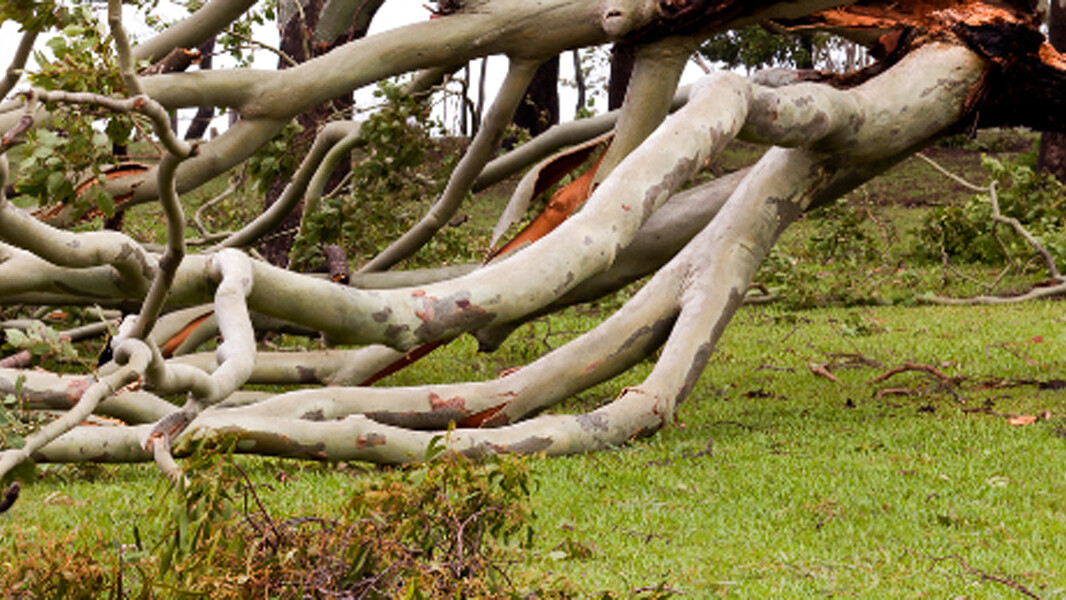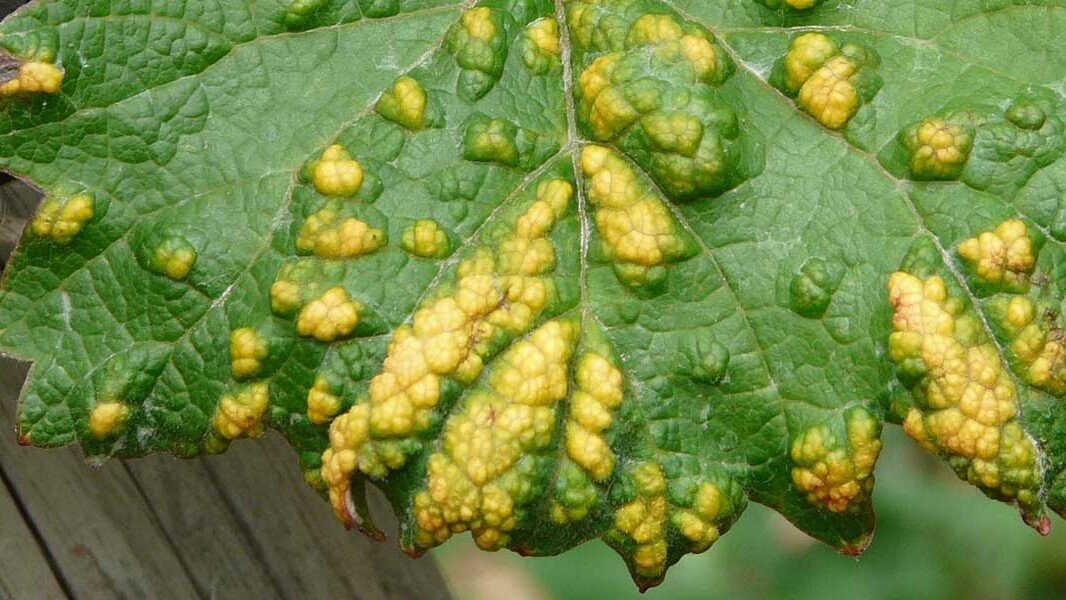The Polyphagous shot-hole borer (known as PSHB; Euwallacea fornicates) is a pest first detected in Australia 2021 in metropolitan Perth. Native to Southeast Asia the small beetle, its tunnelling larvae and the fungus associated with it are damaging and invasive pest species. They have previously spread to Israel, the USA, South Africa and Argentina.
The PSHB’s arrival in Perth presents a new challenge for urban landscapes and home gardeners. As of September 2024, the borer was only known to be present in the Perth metropolitan area.
What Is a Borer?
A borer is the larvae of a small beetle or moth that lays its eggs on the bark or in the wood of trees. The larvae, which look like tiny grubs, chew on the wood of the tree. They create intricate tunnels within the tissue of the wood and make small exit holes in the trunk when they emerge as adult beetles.
Borers are often considered to be garden pests because their tunnelling can weaken branches and interrupt the flow of water and nutrients through the wood. In some cases this ringbarks and kills the tree. Borers tend to infest older trees or trees already weakened by other pests, diseases or unfavourable environmental conditions.
What makes the Polyphagous Shot-Hole Borer (PSHB) different?
While there are many species of borer present in Australia, the PSHB is receiving attention because it is considered highly invasive and damaging to both urban and agricultural trees. Left unchecked, the borer could seriously impact our urban tree canopy as well as important horticultural crops such as avocados and almonds.
One of the reasons that PSHB is of concern is that it uses a wide variety of trees – up to 400 species – as its host. Another is the borer’s symbiotic relationship with a Fusarium fungus, which it cultivates inside the host trees. This fungus serves as a food source for the beetle and its larvae, but while growing inside the tree it blocks the vascular tissue and movement of water and nutrients. This can lead to fusarium die back or death.
Identification

In its adult form, the PSHB is a small brown to black beetle, the females measuring approximately 2 mm in length and able to fly. Males are slightly smaller, about 1.6 mm long, and wingless. The 3-4mm long larvae are white and C-shaped with a reddish head.
It is more likely that gardeners will see damage to the tree from an infestation (see below) than see the pest itself.
Life Cycle
As with many insects, the lifecycle of the PSHB comprises several distinct stages: egg, larvae, pupae and adult. The female beetle lays eggs inside the tunnels within the tree. A few days later, the eggs hatch into larvae which feed on the Fusarium fungus cultivated by the beetles.
After several weeks of development, the larvae pupate within the tunnels, transforming into adult beetles. The flightless male beetles remain in the tunnels while the females are mobile and able to fly to find new mates and host trees. The entire life cycle from egg to adult can take six to eight weeks, depending on environmental conditions and the health of the host tree.
Host Trees

PSHB is known to infest over 500 tree species, with a particular affinity for box elder maples (Acer negundo). In Western Australia, the beetle has shown a preference for species including maple (Acer sp.), black locust (Robinia sp.), coral tree (Erythrina sp.), London plane tree (Platinus sp.) and fig (Ficus sp.) including Moreton Bay and Port Jackson figs. It also infests many species of fruit tree, including avocado, mango, citrus, carob, mulberry, macadamia, almond and loquat. This broad range of host species underscores the potentially serious impact to the urban tree canopy.
Signs of Infestation
Identifying PSHB infestations involves looking for specific symptoms on the bark of trees, rather than for the pests themselves. Symptoms include:
- Tiny exit holes (about 1 mm in diameter, about the size of the tip of a ballpoint pen) in tree trunks.
- Intricate galleries or tunnels in the wood, which look like cobwebs or leadlight patterns in cross-section.
- Frass or sawdust at the openings of the holes.
- Gumming, a thick resin or sap produced by the tree in response to damage.
- Lesions, staining or other discolouration in the wood
- Sugar volcanoes, a sugary substance exuded by the tree in response to damage by the borer
- Dieback of branches and leaves due to the Fusarium fungus.

Management Strategies
In response to the threat posed by PSHB, a quarantine area was extended across the entire Perth metropolitan area in September 2024 after the borers spread beyond the initial, smaller quarantine zone. The larger quarantine region includes 30 local government areas and imposes restrictions on the movement of timber, plant material and wood processing machinery, while also focusing on surveillance and monitoring.
Effective management of PSHB relies on early detection and preventive measures:
- Trapping: Yellow sticky traps with pheromone lures are used to monitor beetle activity by attracting and capturing PSHB beetles.
- Reporting: If you suspect a PSHB infestation, report it to the DPIRD Pest and Disease Information Service at +61 (0)8 9368 3080 or via email at padis@dpird.wa.gov.au. You can also use the MyPestGuide® Reporter app for reporting.
- Pruning and Removal: Infested trees may need to be pruned or removed completely.
- Preventive Practices: To avoid spreading PSHB, it’s essential to clean and disinfect pruning tools and machinery and avoid moving trees or plant material from infested areas.

Home gardeners can help by monitoring their trees for symptoms of PSHB, focusing on the general health of the trees in their gardens, and using mulch made from grass clippings or compost rather than wood chips. Observe the restrictions on moving plant material and machinery beyond the boundaries of the quarantine zone.
Planting native species less attractive to PSHB can also help manage the spread. Recommended plants include the WA Peppermint Tree (Agonis flexuosa), Sydney Red Gum (Angophora costata), various palms and other ornamental species. For more detailed planting recommendations, refer to this planting guide.
Should Gardeners Outside Perth be Worried?
Gardeners in the areas where PSHB is known to occur should follow all recommendations in relation to suspected infestations. Of course, no one likes to see trees in their neighbourhood hard pruned or removed, however left unchecked this pest represents a major threat to our urban trees.
For gardening professionals and home gardeners in the rest of Australia, being aware of this new species and the symptoms to look out for is all that’s required at present.
References
All images courtesy of WA DBIRD
Australian Government Outbreak: Animal and Plant Pests and Diseases
WA Department of Industries and Regional Development
Paap, Z.W. De Beer, D. Migliorini, W.J. Nel, M.J. Wingfield (2018) First report of the polyphagous shothole borer (PHSB) and its fungal symbiont in South Africa, South African Journal of Botany, Vol 115, p 305.
Gardening Australia ‘Polyphagous Shot-Hole Borer‘
Related Articles:
Why Living Trees Suddenly Fall Down
It is quite common that in winter or after big storms we wonder why living trees suddenly fall down. In June 2021 in Victoria, savage storms swept…
Prevent Pests in Your Garden
If you can prevent pests in your garden you will save time, resources and money as well as helping your garden flourish. Effective pest control is…


